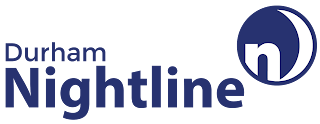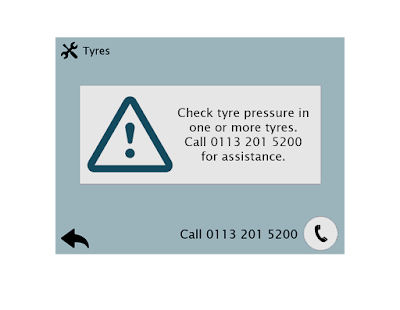Final Logo Design:
Above is the final logo design that I have chosen. The design uses handwritten lettering to create a more relatable and trustworthy atmosphere for the viewer, as well as to make the logo more delicate and sensitive. The owl illustration was, in juxtaposition, created digitally and with straight clear lines. This was done in order to add a more serious and professional tone to the design. The illustration design highlights just the distinctive features of the owl, to make it easily recognisable. It is also slightly unrealistic, especially with the owls eyes, this was done in order to make the owl appear more friendly and approachable. The colour navy blue was chosen for the design as it is a serious yet calming colour. It creates a night time atmosphere which reflects the open hours of the service, as well as the time of day which is most quiet and peaceful. The composition of the logo sees the owl sit on top of the logo lettering, making the 'Leeds Nightline' the support for the owl. This symbolises how the service can also be a support for its target audience. The owl is also looking at 'Leeds Nightline', this again symbolises how the service can be looked towards and approached for support.
I decided to take away the 'star' illustrations from the logo design, as upon reflection I found that the stars made the logo design feel too juvenile, especially alongside the delicacy and hand-made elements that already exist within the logo design. Without the star illustrations, I believe the logo design feels more serious and professional.
Application - Sticker Design:
 An additional requirement for the brief, alongside the logo design, was to design either a leaflet or a sticker. I choose to design a sticker. The requirements for the sticker was that it did not exceed 10cm in any shape, and that it had all the slogan, contact and opening hours information about the service. The shape I choose for the sticker was round, this was because the circle is the most non-threatening shape as it doesn't have any corners. I though this would be appropriate for the audience as to make them feel calm and safe when reading the information. Also, the circular shape fits into the theme of night time as it hold connotations with the moon. With the layout of the sticker, I wanted to keep it simple and easy to read, as well as the logo fairly central. With the logo in the centre, the audience is instantly aware of what service the sticker is promoting. The information surrounding the logo, then lets the audience know more information, if they want to. To add some substance to the design, I had also decided to add a cloud-like shape to the sticker, within which the contact information would be placed. This was done not only to make the sticker more intriguing and visually pleasing, but to also bring an emphasis and draw attention towards the contact information, so that it was easily found and read on the sticker by the audience. The type I used for the contact information is a simple Helvetica regular, so that the information could be legible and clear, as well as because there was already a lot of content and a lot going on within the sticker. For the slogan, I wanted it to arc around the circumference of the sticker, so that it did not interfere with the rest of the content, but also was easy to read by the viewer. I considered having the slogan in the same Hevetica Regular as the contact information, however that proved to make the whole design of the sticker feel unbalanced and dull.
An additional requirement for the brief, alongside the logo design, was to design either a leaflet or a sticker. I choose to design a sticker. The requirements for the sticker was that it did not exceed 10cm in any shape, and that it had all the slogan, contact and opening hours information about the service. The shape I choose for the sticker was round, this was because the circle is the most non-threatening shape as it doesn't have any corners. I though this would be appropriate for the audience as to make them feel calm and safe when reading the information. Also, the circular shape fits into the theme of night time as it hold connotations with the moon. With the layout of the sticker, I wanted to keep it simple and easy to read, as well as the logo fairly central. With the logo in the centre, the audience is instantly aware of what service the sticker is promoting. The information surrounding the logo, then lets the audience know more information, if they want to. To add some substance to the design, I had also decided to add a cloud-like shape to the sticker, within which the contact information would be placed. This was done not only to make the sticker more intriguing and visually pleasing, but to also bring an emphasis and draw attention towards the contact information, so that it was easily found and read on the sticker by the audience. The type I used for the contact information is a simple Helvetica regular, so that the information could be legible and clear, as well as because there was already a lot of content and a lot going on within the sticker. For the slogan, I wanted it to arc around the circumference of the sticker, so that it did not interfere with the rest of the content, but also was easy to read by the viewer. I considered having the slogan in the same Hevetica Regular as the contact information, however that proved to make the whole design of the sticker feel unbalanced and dull.To bring balance and cohesion to the sticker, I decided that having the slogan written in the same handwritten style as the logo would add a more sensitive and approachable feel to the sticker. I used a circular guide and wrote out the slogan by hand naturally creating a curve/arc in the sentence. When i digitalised and placed this within the sticker design, I believe it brought the whole thing together and created a cohesion and design consistence across both the logo and sticker designs.
Final Logo and Sticker Design:






























































































